The Wedding Attire Culture of Ancient China

Starting from the recorded wedding ceremonies of the Zhou Dynasty, the basic structure of Han Chinese weddings has been preserved for over 3,000 years. Though wedding traditions have evolved significantly over time—especially with the social changes of the modern era—the core desire for happiness remains unchanged, regardless of the ceremony’s form. Are you curious about the traditional wedding attire of China? In this blog, SilkDivas will introduce some key concepts to help you better understand this fascinating cultural heritage.
Ⅰ. Wedding Process
In ancient China, a wedding followed six essential rituals, from the initial proposal to the final marriage ceremony. These six steps were:
Nacai (纳采) – the formal proposal,
Wenming (问名) – exchanging names and birth dates for compatibility checks,
Nají (纳吉) – confirming the auspiciousness of the match,
Nazheng (纳徵) – sending betrothal gifts,
Qingqi (请期) – selecting a wedding date,
Yingqin (迎亲) – the groom’s procession to escort the bride to his home.
During the early Han Dynasty, wedding customs varied across different regions, with no unified standard. However, court official Shusun Tong (叔孙通) promoted a structured wedding system based on Zhou Dynasty traditions, which gradually became widespread. Over time, the Six Rituals (六礼) were adopted as the standard wedding process, particularly among the ruling class, and their influence can still be seen in Chinese wedding traditions today.
1. Nacai (纳采) – The Formal Proposal
Nacai was the first step in the traditional Chinese wedding process, where a matchmaker, representing the groom’s family, would visit the bride’s family to propose marriage and inquire about their willingness. If the bride’s family agreed, the groom’s family would then send gifts through the matchmaker as a formal gesture of commitment.
2. Wenming (问名) – Exchanging Names and Birth Dates for Compatibility Checks
After the bride’s family agreed to the proposal, the groom’s family would prepare gifts and send a matchmaker to the bride’s home for Wenming, meaning “inquiring about the name.” This step involved gathering key information, including the names and surnames of the bride’s parents, the bride’s full name, her birth order among siblings, her birthdate and time, as well as details about her family background going back three generations.
As part of this ritual, the groom’s family would also present a Geng Tie (庚帖)—a formal document containing similar information about the groom. This document was traditionally written on red paper (as white was considered inauspicious), and the number of characters used was carefully chosen to avoid unlucky odd numbers.
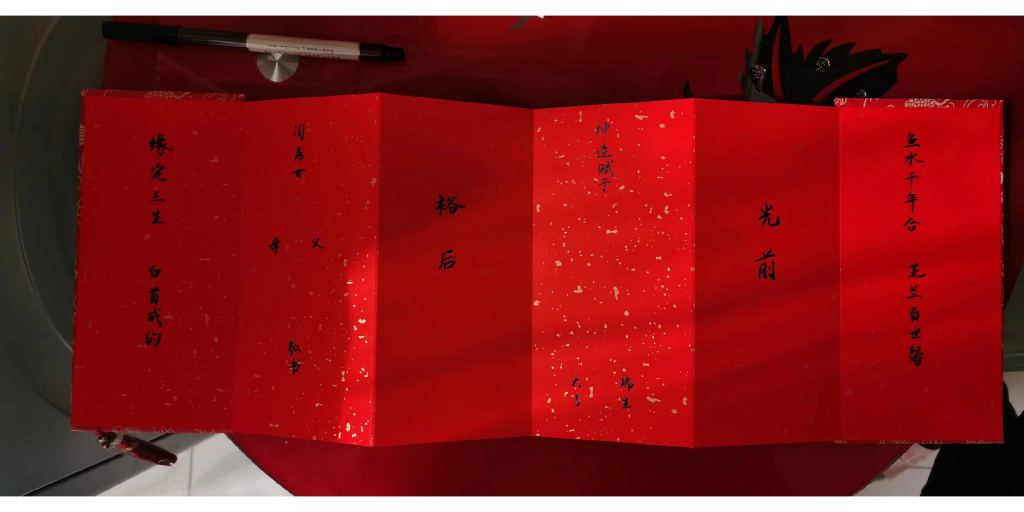
3. Naji (纳吉) – Confirming The Auspiciousness of The Match
After gathering the necessary information during the Wenming stage, the groom would consult a fortune-teller to predict whether the marriage would be favorable. If the result was positive, the match would be considered a “perfect match made in heaven.” If the prediction was unfavorable, the marriage plans would be called off. The groom would then send a matchmaker to the bride’s family to share the good news, if the signs were auspicious.
4. Nazheng (纳徵) – Sending Betrothal Gifts
Once the bride agrees to the marriage proposal, the groom formally solidifies the union by sending betrothal gifts to the bride’s family. This step, also known as “Nacai” (纳财), serves as a confirmation of the marriage and signifies the groom’s commitment to the relationship.
5. Qīngqī (请期) – Setting a Wedding Date
After the groom sends the betrothal gifts, he sends the matchmaker to the bride’s family to inform them of the proposed wedding date. This date is carefully chosen by a fortune teller to ensure it is an auspicious day for the marriage, and the bride’s consent is sought before finalizing the date.
6. Yíngqīn (迎亲) – The Wedding Procession
The final and most important step is the wedding procession. The groom personally leads the procession, with gongs and drums creating a lively and festive sound. The sedan chair, carried by porters, moves through the streets amidst the loud noise of firecrackers and drums, as the groom brings the bride back to his home, completing the entire wedding ceremony.
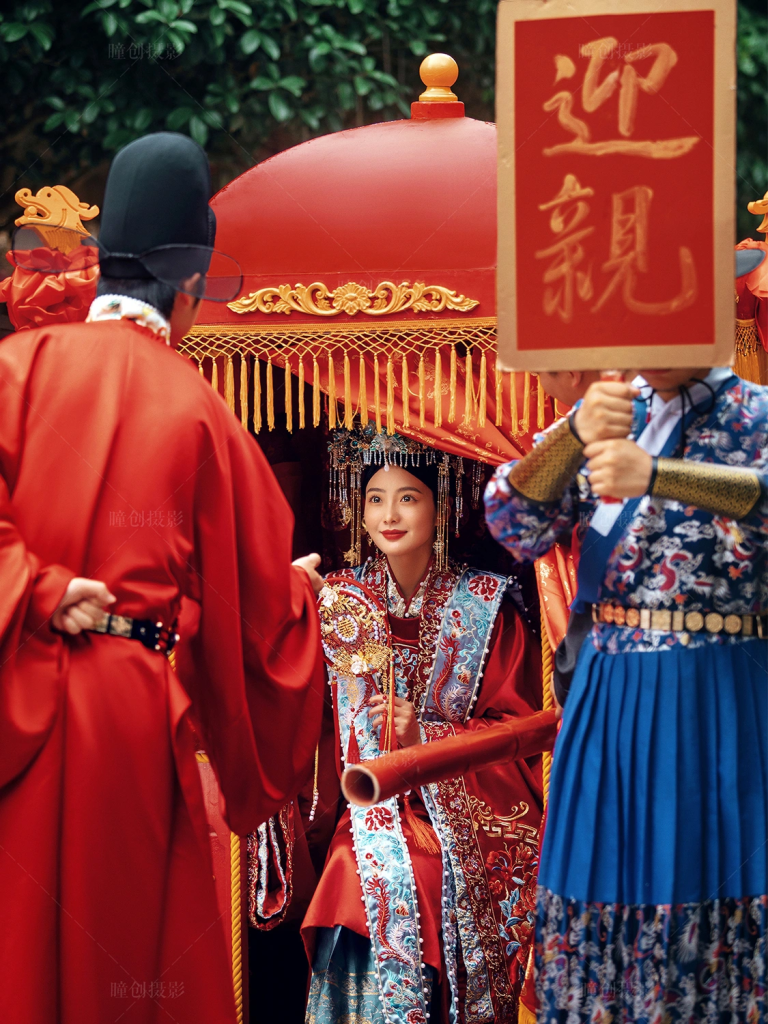
II. Dynasty Wedding Attire
Wedding attire from different dynasties is closely tied to the cultural context of the time. From the ancient and simple Zhou Dynasty to the elegant and luxurious Tang Dynasty, and the understated yet refined Song Dynasty, each style reflects its era. Which of these styles do you prefer?
Zhou Dynasty
In the Rites of Zhou, it is mentioned that “xuan xiu” (玄纁) represents the colors of heaven and earth, with *xuan* meaning black and *xiu* referring to a light red color. The people of the Zhou Dynasty favored dark colors, considering them to be noble and in harmony with the natural world. As such, wedding attire predominantly featuring black and red symbolized the Zhou people’s reverence for the the heavens, earth, and all things.

Wei, Jin Dynasties
During this period, the prevailing philosophy of “embracing simplicity, returning to nature, and pursuing freshness and elegance” influenced the fashion of the time. As a result, white not only became common in everyday clothing but also in ceremonial attire. Unlike the heavy wedding dresses of previous dynasties, the wedding gowns of this era were lighter and more delicate, with a style that featured a top garment like a tunic or robe, paired with a skirt. The design emphasized simplicity with elegant detailing, reflecting the trend for a fresh, refined look. Though white wedding dresses were in vogue for only about a century, this refreshing style left a lasting impact on the Sui and Tang dynasties.

Tang Dynasty
During the flourishing Tang Dynasty, as the quality of life improved and dyeing techniques advanced, people began to pursue a more ornate and beautiful aesthetic. The wedding attire of this period combined the solemnity and sacredness of the Zhou Dynasty wedding traditions with the lively and festive elements that followed. The colors were typically red for the groom and green for the bride, with the style being the chai dian li yi (钗钿礼衣,hairpins and headpieces) ceremonial dress. This combination of wedding attire reflected a new sense of aesthetic consciousness and taste among the people.

Song Dynasty
In the Song Dynasty, while largely maintaining the Tang Dynasty style, there was a greater emphasis on the beauty of simplicity. On the wedding day, the children of high-ranking officials could temporarily wear the official attire of the ninth rank, the fu tou (幞头, traditional headwear). Commoners, on the other hand, would wear simple black robes and a folded cap. The bride typically wore a floral crown, xia pei (霞帔, a type of shawl), and a long-sleeve dress, with the color being blue. The xia pei was a long, embroidered shawl, usually double-layered and made from thick fabric. At the lower end of the shawl, there was often a decorative ornament, which, in wealthy families, was typically made of gold and known as a jin pei zhui (金帔坠, golden ornament).

Ming Dynasty
In ancient times, there were strict regulations regarding clothing, including rules on color selection, and common people were not allowed to wear attire that conflicted with official or ceremonial dress. However, the Ming Dynasty wedding customs were an exception. In the Ming era, it was common for commoner men to marry in what was known as “small promotion” (小登科), meaning they were allowed to wear the official attire of the ninth rank. Brides were also permitted to wear a “fengguan xiapei” (凤冠霞帔, phoenix crown and shawl), but only during the wedding ceremony. Additionally, in the Ming Dynasty, there was a correspondence between the wedding outfits of men and women. If the groom wore dark clothing, the bride would wear a bright red robe, a red skirt, and decorate her hair with floral hair ornaments.

Qing Dynasty
In the Qing Dynasty, wedding attire continued the tradition of the Ming Dynasty’s “phoenix crown and xia pei” (霞帔, a ceremonial headpiece and cape). Although red remained the dominant color, the style of the wedding dress was based on the qipao.

III. Myths of the Wedding
Wedding culture is filled with symbols of sweet love and marital happiness. Some symbols carry deep meanings, while others play on homophones. Additionally, there are several interesting mythical stories associated with weddings.
The Old Man Under the Moon
The Old Man Under the Moon, also known as Yue Lao (月老), is a Chinese folk deity responsible for managing marriages. Temples dedicated to him are called Yue Lao Temples. In ancient times, some young couples chose to hold their weddings at Yue Lao’s temple, hoping that he would arrange their marriage, symbolizing the belief that their union was destined by fate. They wished for a marriage that would last forever. There are numerous legends about Yue Lao.
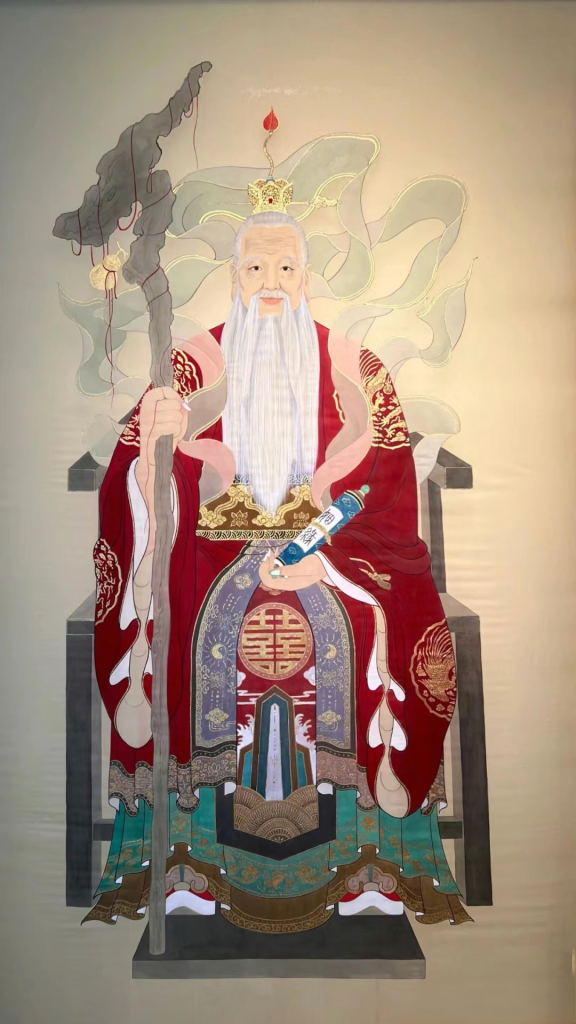
For instance, in the Tang Dynasty, the book Xu You Guai Lu by Li Fuyan (李复言, 《续幽怪录》) tells the story of a young man named Wei Gu (韦固). One night, he met an elderly man at an inn, sitting under the moonlight with a cloth bag, reading a book as if searching for something. Wei Gu asked what the old man was reading, and the man replied, “This is the marriage book of all the people in the world.” The red string he use, a tool used in the legend, is said to be tied around the feet of both parties, ensuring that even if they are miles apart, they will eventually meet and marry. The old man then told Wei Gu that although his future wife was now a poor girl, they would eventually marry. At first, Wei Gu did not believe him and tried to change his fate. However, in the end, he married as Yue Lao had predicted.
Peach Blossoms
Peach blossoms are typically pink or red in color, giving off a warm and gentle feeling. In Taoist and folk culture, peach blossoms are believed to have the power to ward off evil spirits, bring good fortune, and promote romantic relationships. According to popular legends, peach blossoms are often seen as a symbol of good marriage prospects. In some places, there is a custom of “plucking a peach blossom branch and placing it under the pillow,” with the belief that it will attract a destined partner.
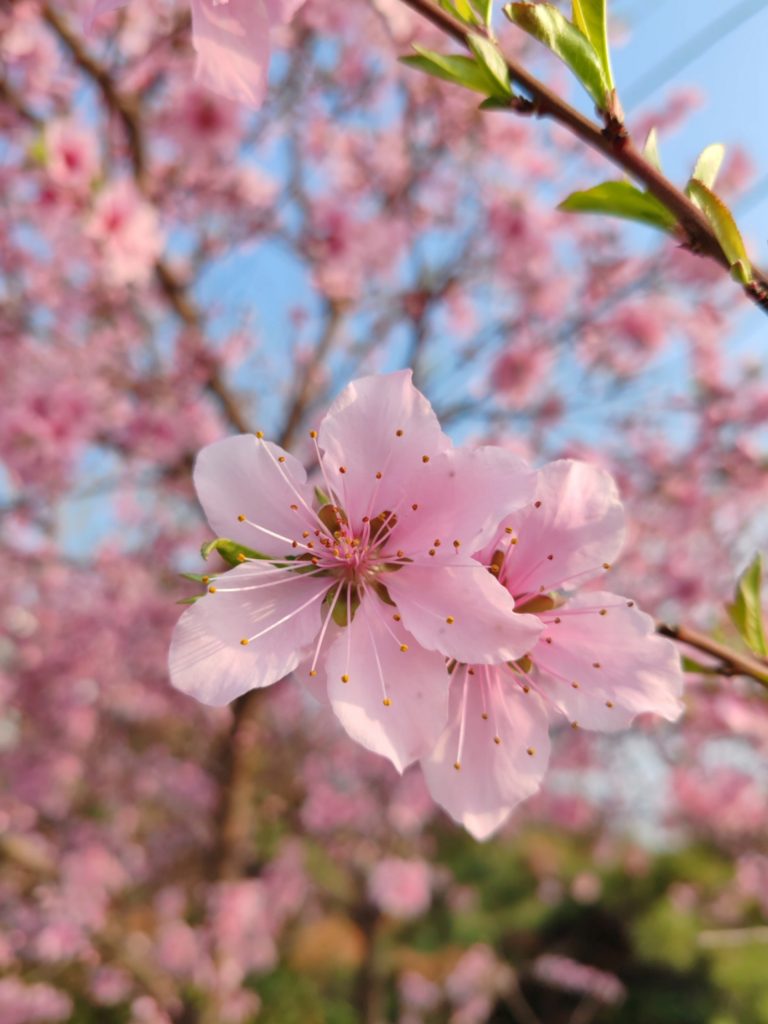
Peach blossoms are also associated with good personal relationships and strong romantic connections. In the I Ching, the directions “Zi, Wu, Mao, You” (子、午、卯、酉) represent the four cardinal points—south, north, east, and west. When these “four symbols” align, peach blossoms are said to bloom, making it an ideal time to seek love. As a result, people often refer to their romantic luck as “peach blossom luck.”
Magpie
In traditional Chinese culture, the magpie has always been a beloved symbol of good fortune and joy. It is a significant representation in Chinese culture. According to legend, on the Qixi Festival (the “Chinese Valentine’s Day”), the Cowherd and the Weaver Girl meet on the Magpie Bridge, and the magpie carries the love between them. The bird also symbolizes celebration and good luck. Beyond weddings, magpies can be found in Chinese folk art, such as paper-cutting, pottery, and embroidery on handkerchiefs, among other items.

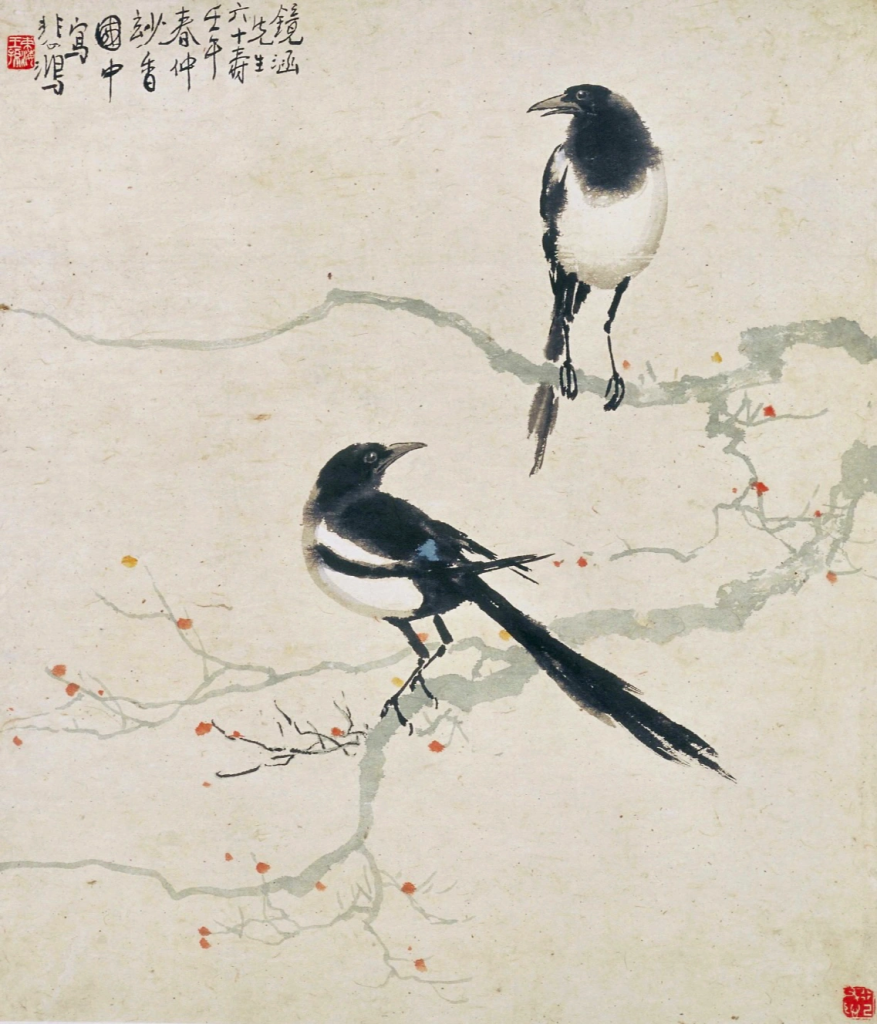
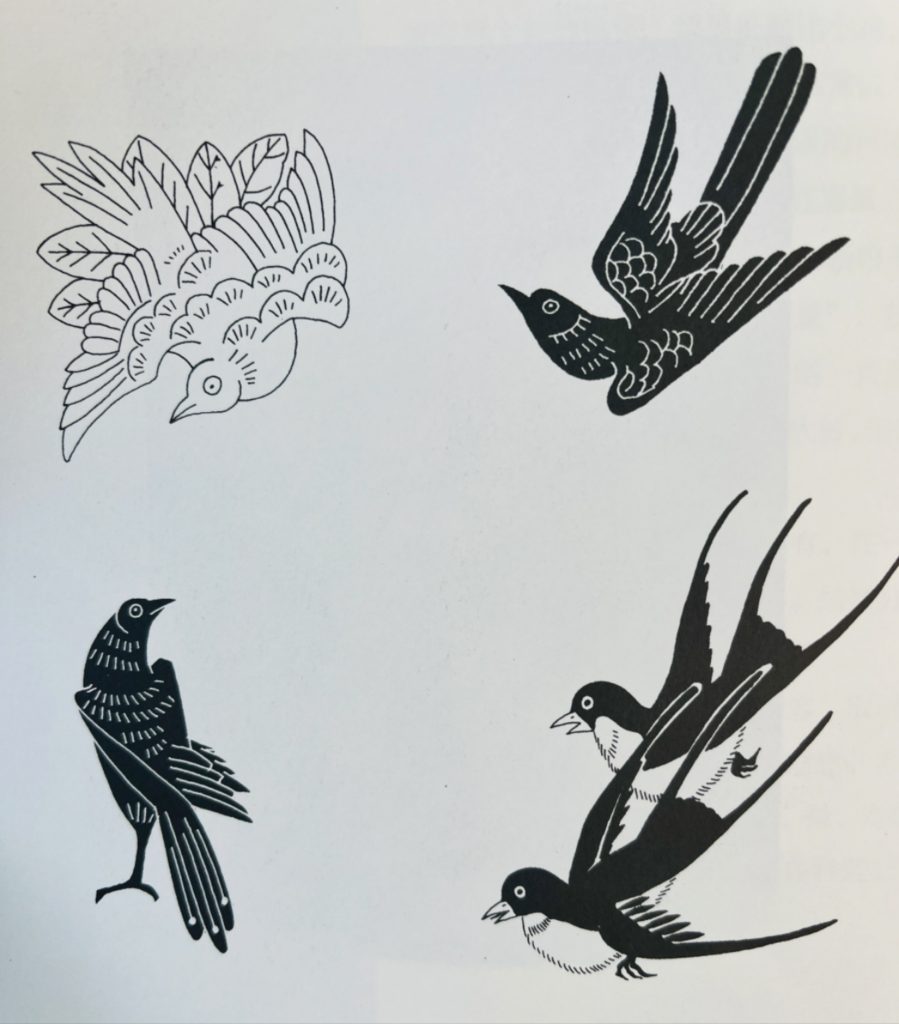
Conclusion
China’s traditional wedding customs have evolved significantly over time. In ancient times, women did not have inheritance rights and were often considered subordinate to men. As a result, marriage was incredibly important for women, often seen as the only opportunity to change their fate. They had to approach it with great caution, as it could be their one chance to reshape their lives. However, after the founding of the New China, women gained inheritance rights, the ability to work, and the freedom to pursue their own dreams, just like men. Marriage shifted from being seen as a duty to becoming a personal choice.
A wedding is a ritual, a ceremony to seek blessings from the gods and ancestors when forming a family. It is also a way to announce the union to the world and share the joy with others. In Chinese culture, joyful events should be celebrated widely, allowing everyone to partake in the happiness. In an ideal world, people would unite, live in harmony, and create a sense of unity. It is we hope that everyone, in this fast-paced society, can find the person they truly want to spend their life with.
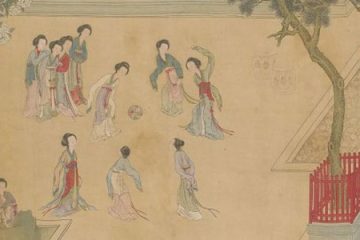
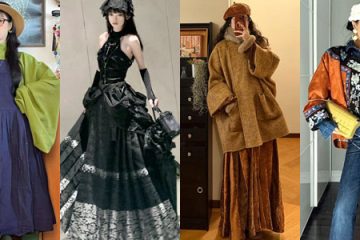
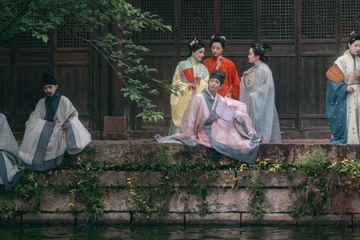
0 Comments